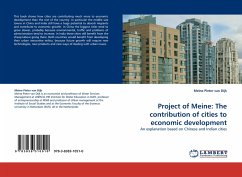Revision with unchanged content. This paper considers the potential of engaging the development community as a primary means of solving the emerging environmental crisis. Specifically, it addresses how the principles of sustainable design can be incorporated into communities and buildings, while taking into account the economic realities implicit with every successful project. Using case study examples of recent projects where environmental stewardship was a primary consideration, the thesis examines the relationship between sustainable design strategies and their influence on both capital costs and the perceived value of the completed project. It is proposed that a comprehensive understanding of the economic impact of sustainable design is essential for architects to make informed decisions, given a client s environmental and fiscal expectations. In addition, it is the responsibility of building design professionals to encourage a more sustainable society, and design buildings that will be of net positive impact to the environment.








